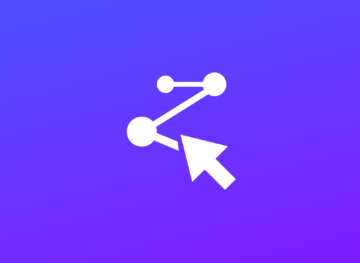
As user experiences become increasingly important to bottom-line growth, organizations are turning to behavior analytics tools to understand the user experience across their digital properties. In doing so, organizations are maximizing the strategic value of their customer data and gaining a competitive advantage. According to McKinsey, organizations that leverage customer behavioral insights outperform peers by 85% in sales growth and more than 25% in gross margin. Here’s what these analytics are, how they work, and the benefits your organization can realize from using them.
What is behavior analytics?
Behavior analytics is a form of business analytics that tracks and evaluates a user’s complete journey through a website or mobile application. By combining qualitative and quantitative data assessments, analytics can pinpoint what features or services are most interesting to users, where they run into problems accessing what they’re looking for, what motivates them to convert, and what causes them to abandon their sessions altogether. Organizations use these analytics to understand their users’ behavior, identify the root causes of user experience issues, improve their digital products, and optimize the customer experience.
Types of behavior you can track with analytics
Organizations can track many different kinds of behavior with analytics. Here are four of the most common behaviors that organizations evaluate to understand and improve the user experience.
- Clicks and taps show if users are continually clicking (also known as rage clicking) on something that can’t be clicked on, like plain text or an image. They also highlight whether users are clicking on a call to action (CTA) or a newly released product feature.
- Scrolling can demonstrate whether users are making it far down enough to even notice a CTA, which could explain why a particular conversion rate is running lower than expected.
- Mouse movements indicate which elements of a web page or app are attracting users’ attention versus the ones that are entirely flying under the radar.
- Navigation analytics, which can be seen in session replay, provide a more holistic look at user behavior, showing the user experience exactly as users encounter it. You can use session replay to alleviate users’ pain points and resolve user experience issues faster.
How behavior analytics works
User behavior analytics works by first collecting, then analyzing user behavior data.
Collect user behavior data
Organizations typically use analytics software to collect a large volume of data on user behavior from relevant sources. These sources can include the website or app itself, a data warehouse or a customer data platform (CDP), or social media monitoring tools. An organization may collect this data the following ways.
- By installing a tracking code on its website or integrating its analytics tool with a third-party e-commerce platform, CMS, or Google Analytics.
- Using application programming interfaces (APIs) to instrument a wider range of digital touchpoints. These touchpoints can include traditional rich client applications, smart IoT applications, and even Alexa skills.
Although much of the information gathered will be first-party data that the organization has directly collected from its interactions with the customer, third-party data purchased from companies can also be applied to create a fuller, more personalized picture of the customer and their individual preferences.
Analyze user behavior data
Once collected, teams can then segment the data according to specific parameters. These parameters can include device type, geolocation, app version, browser, and operating system. Such details provide complete context into a user’s behavior or even shed light on the behavior of specific behavioral cohorts, or groups of users.
An organization with a mature analytics practice will typically distinguish between user properties. These properties reflect the state of the user and apply to all their associated events and event properties. For example, any action a user takes on the company’s website or app.
By comparing user behavior and conversions across all channels and scenarios, drilling down to individual customer journeys enables an organization to gain a comprehensive understanding of the customer experience and how to optimize it.
Types of behavior analytics tools
Organizations can use various tools to better understand certain aspects of user behavior. The following are some of the most frequently used behavior analytics tools.
- A/B testing allows organizations to compare two versions of a web or app experience and then determine which one performs better.
- Heatmap tools show the locations on a website or app that get the most user activity versus the ones they overlook. This way, organizations can adjust the layout to make sure it more prominently features the content or CTA for users to find.
- Voice of the customer (VOC) and customer feedback tools also provide valuable insight into the customer experience. Customers themselves can directly tell you how they are responding to a website or app and why they are interacting with it in a particular way. Metrics like the net promoter score (NPS) or customer satisfaction (CSAT) score encapsulate this kind of customer feedback into measurable analytics.
- Session replay provides the ability to witness exactly how users are interacting with a website or app so you can put yourself in their shoes. By reviewing session recordings, you can see what your users are trying to do, figure out where they’re running into trouble, and then spot what’s frustrating them or causing them to abandon their session.
- Real user monitoring (RUM) is another tool that, by collecting detailed data about a real user’s interactions with a website or app, can help proactively spot user experience problems — in some cases, before the users themselves even notice them.
Benefits of behavior analytics
Organizations can use analytics to quickly zero in on the root cause of user experience issues, enabling support teams to proactively identify why users are reaching out for support before the conversation even begins, and resolve their complaints immediately. If customers are dropping off at a certain point, teams are able to figure out why that is happening and correct the problem in short order. As organizations become more familiar with baseline trends in user behavior, teams can develop hypotheses for why users are taking certain actions, and later verify with relevant analytics.
Teams can also tap analytics insights to improve engagement with an existing feature or develop a new one, confident in the knowledge of what customers want and expect from their interactions with a website or mobile app. With a single source of truth, organizations can align cross-functional teams from areas such as IT, product, marketing, customer support, and the C-suite toward a shared vision of delivering the best customer experience possible.
How to choose the right behavior analytics solution
While many analytics tools can supply raw data points such as conversion rates and bounce rates, only with the necessary contextual insight can organizations determine why users are taking specific actions. The right analytics solution can provide the precise insight needed to understand what is driving user behavior and, from there, what to do about it. An advanced analytics solution should include the following capabilities.
- Automatic, AI-driven root-cause analysis
- End-to-end monitoring of each individual customer journey
- Comparison of behavior and conversions across all channels
- Full contextual insight into the user experience
- Real-user monitoring (RUM) with Session Replay
- Synthetic monitoring
- Business analytics
Behavior analytics made simple
If organizations don’t understand how users interact with their website or mobile app, they’ll have difficulty advancing their business goals. Dynatrace enables organizations to understand user behavior with big data analytics based on gap-free data, eliminating the guesswork involved in understanding the user experience.
The Dynatrace platform uses causal AI to give teams these insights out of the box so they can see exactly how users are engaging with their site or app at every stage of the customer journey. With the ability to zero in on relevant entry points and conversions, teams can steadily improve performance. When rolling out new features, user behavior analysts can use these capabilities to track customer adoption and make sure goals are proceeding on track. Analyst teams can also use Dynatrace to pinpoint where users are abandoning their sessions, so developers can eliminate friction points in the user experience and improve engagement.


